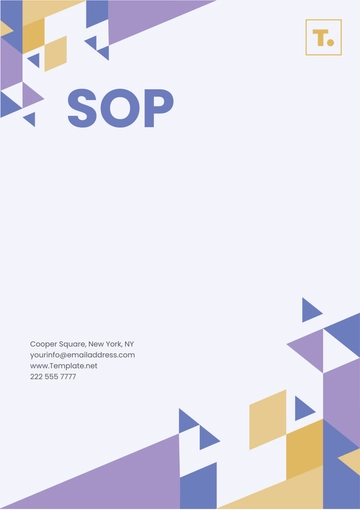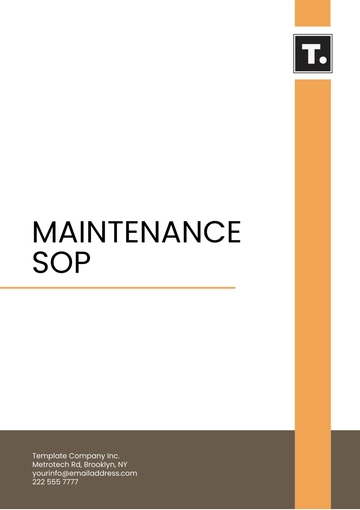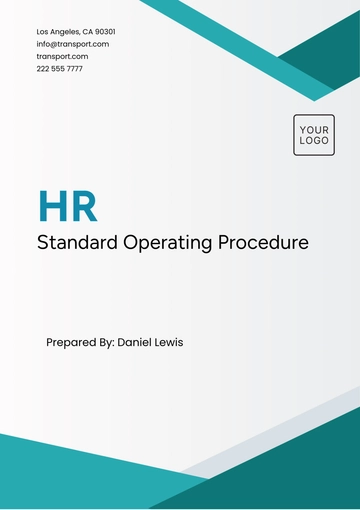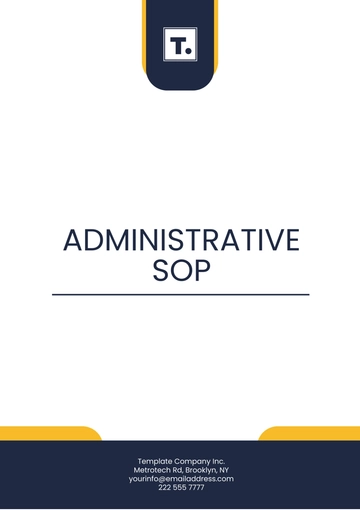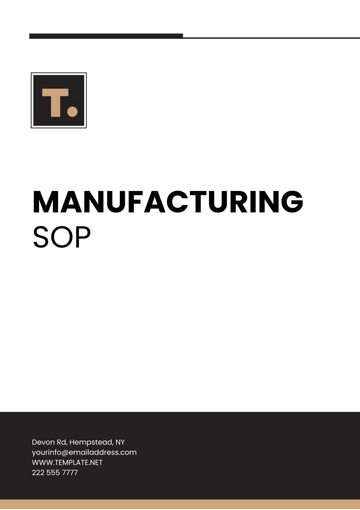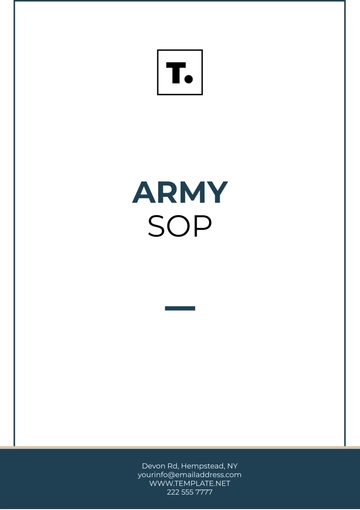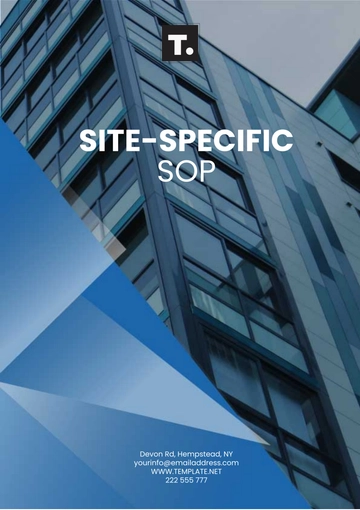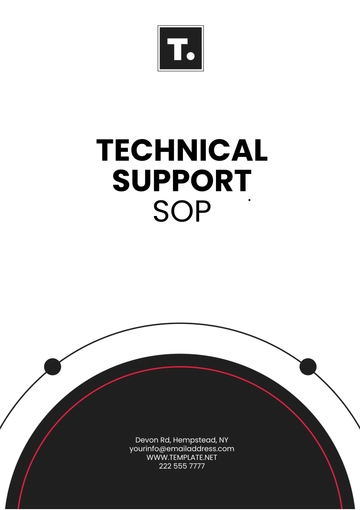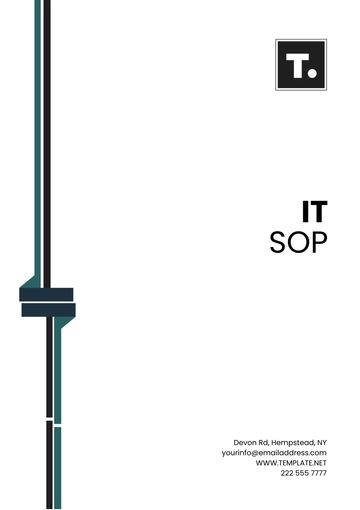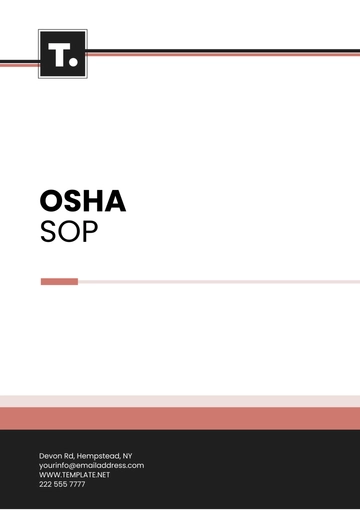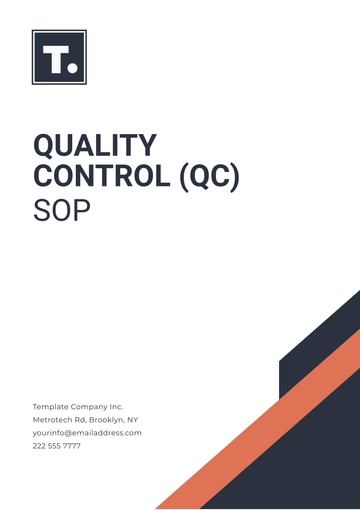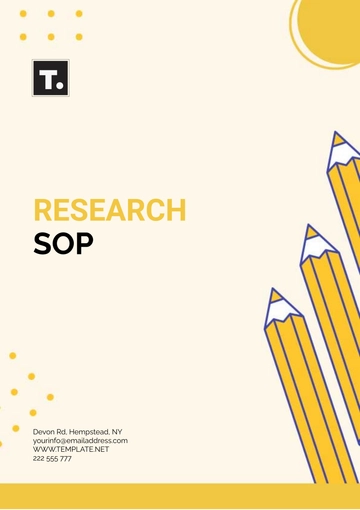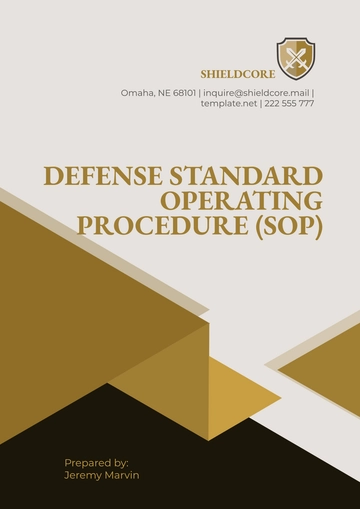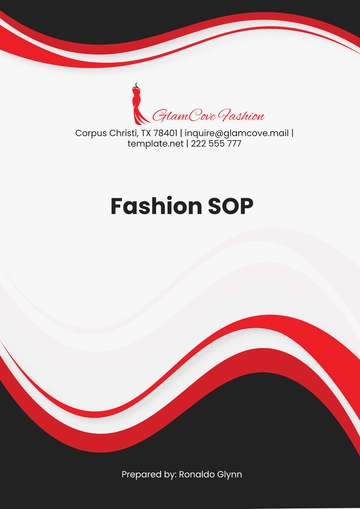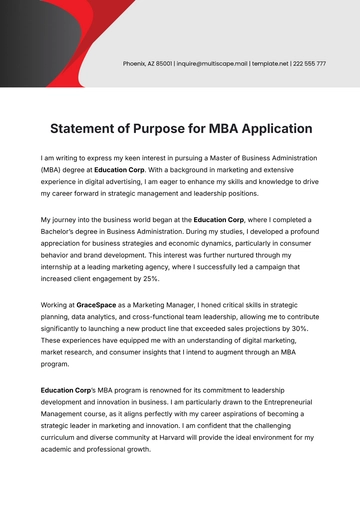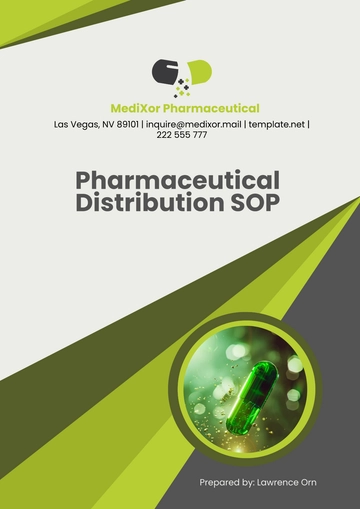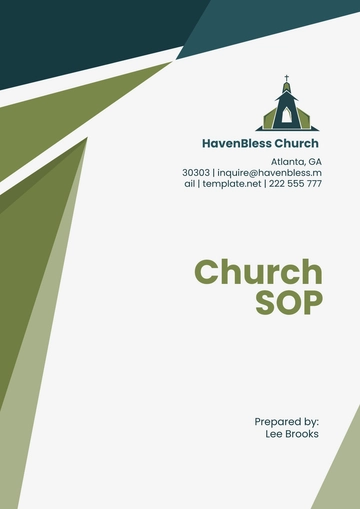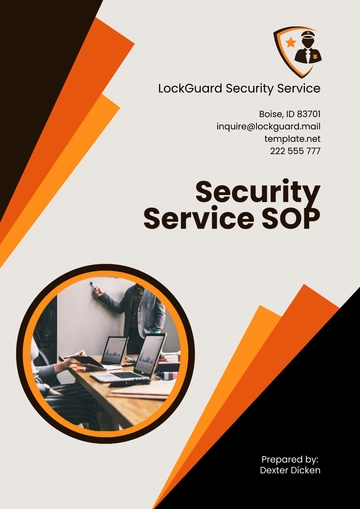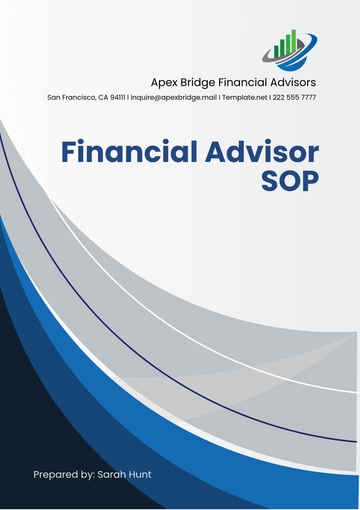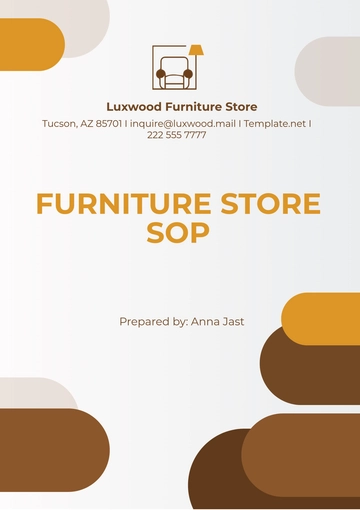Free School Business SOP
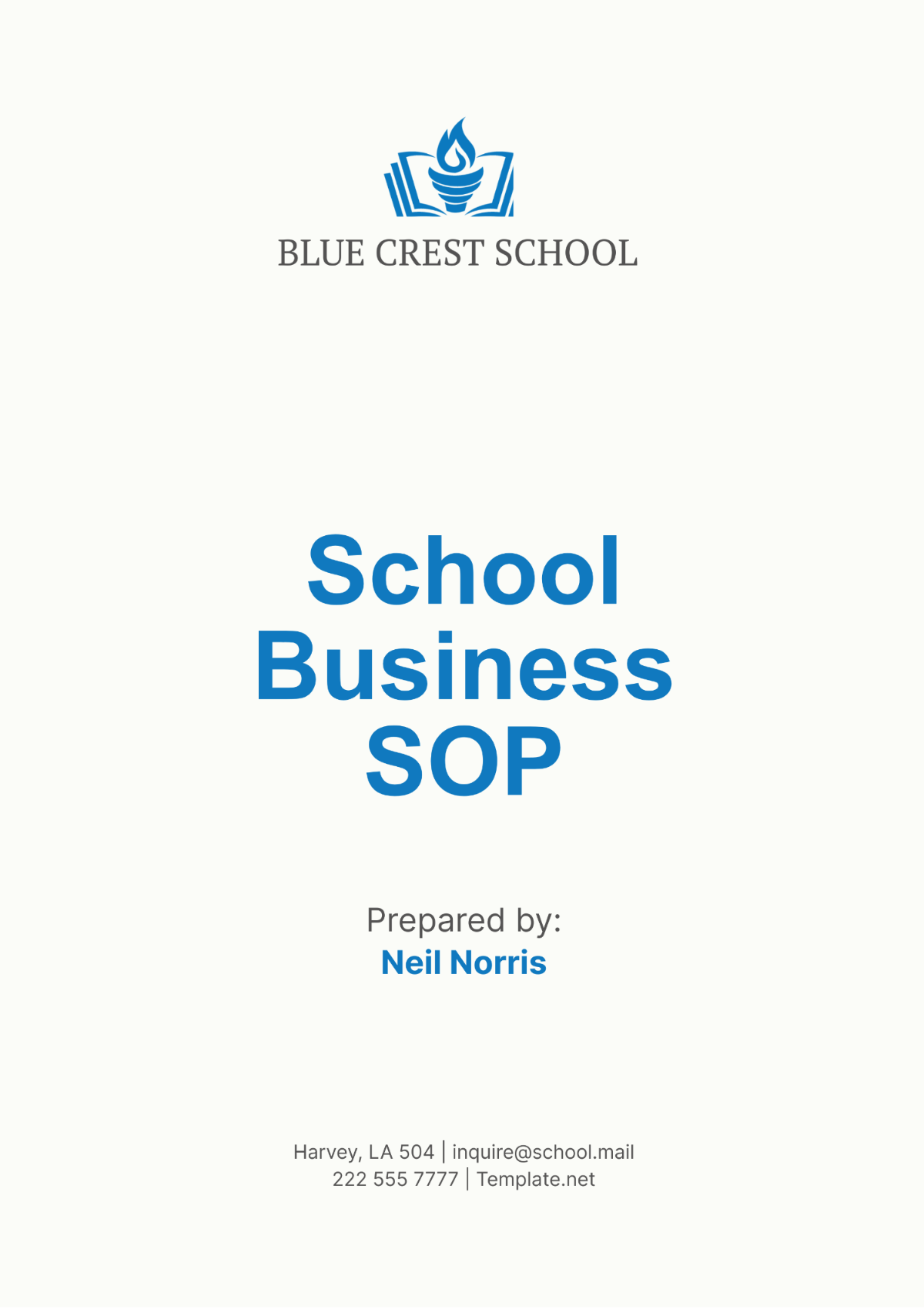
I. Introduction
This Standard Operating Procedure (SOP) outlines the processes and protocols essential for the effective management and operation of [Your Company Name]. The purpose of this SOP is to ensure consistency, efficiency, and compliance across all areas of school business operations. This document covers financial management, procurement, human resources, facilities management, administrative procedures, technology management, academic management, communication and public relations, and risk management.
II. Financial Management
A. Budget Planning and Approval
Budget planning is a critical step in ensuring that our financial resources are allocated effectively to support our educational goals. Each department is required to submit a detailed budget proposal outlining projected expenses and revenue for the upcoming fiscal year. These proposals are reviewed by the finance committee, and a consolidated budget is created. The final budget must be approved by the school board before implementation.
B. Expense Tracking and Reporting
To maintain financial accountability, all expenses must be tracked and documented. Each department is responsible for maintaining accurate records of expenditures and submitting monthly expense reports to the finance office. These reports are reviewed to ensure that spending aligns with the approved budget. Any discrepancies are investigated and addressed promptly.
C. Fund Allocation and Management
Effective fund allocation is essential for the smooth operation of [Your Company Name]. Funds are allocated based on the approved budget, with priority given to essential operational areas such as staff salaries, facilities maintenance, and educational programs. The finance office monitors fund distribution and ensures that all financial transactions are recorded accurately. Regular financial statements are prepared to provide transparency and accountability.
D. Financial Audits and Reviews
Regular financial audits and reviews are conducted to ensure the integrity of our financial practices. An external auditor is engaged annually to review our financial statements and assess compliance with relevant regulations and standards. Internal reviews are also conducted periodically to identify and mitigate potential risks. Findings from these audits and reviews are reported to the school board, and any necessary corrective actions are implemented promptly.
III. Procurement Procedures
A. Vendor Selection and Management
The vendor selection process involves identifying and evaluating potential suppliers to ensure they meet our standards for quality, reliability, and cost-effectiveness. A request for proposals (RFP) may be issued for significant purchases, allowing vendors to submit bids. Vendors are selected based on a combination of price, quality, and service. Once selected, vendors are monitored regularly to ensure they continue to meet our requirements.
B. Purchase Requests and Approvals
Purchase requests must be submitted through the designated procurement system. Each request should include detailed information about the required goods or services, including quantity, specifications, and estimated cost. Requests are reviewed by the procurement department and must be approved by the appropriate authority before any purchase is made. This ensures that all purchases are necessary and within the budget.
C. Inventory Management
Inventory management involves tracking and managing the school's supplies and equipment. An inventory control system is used to record the receipt, storage, and distribution of all items. Regular inventory audits are conducted to ensure accurate record-keeping and to identify any discrepancies. Proper inventory management helps prevent overstocking or shortages and ensures that resources are available when needed.
D. Payment Processing and Documentation
Once goods or services have been received and verified, the payment process begins. Invoices are matched with purchase orders and delivery receipts to ensure accuracy. Payments are processed through the finance department, and detailed records are maintained for each transaction. Proper documentation is essential for financial accountability and for resolving any disputes that may arise.
IV. Human Resources Management
A. Recruitment and Hiring Processes
The recruitment and hiring process is designed to attract and select highly qualified candidates who align with [Your Company Name]'s values and objectives. This process ensures a transparent and fair approach to hiring, aiming to build a skilled and dedicated team. The steps involved in the recruitment and hiring process are as follows:
Job Posting and Advertisement
Application Screening
Initial Interview
Skills Assessment
Final Interview
Reference Check
Job Offer and Acceptance
B. Employee Onboarding and Training
Upon hiring, new employees undergo a comprehensive onboarding process to familiarize them with [Your Company Name]'s policies, culture, and expectations. This process includes an orientation session covering essential information, introductions to key staff members, and a tour of the facilities. Additionally, new hires receive role-specific training to equip them with the skills and knowledge necessary for their positions. Ongoing professional development opportunities are provided to ensure continuous growth and improvement.
C. Performance Management and Evaluation
Effective performance management is crucial for maintaining high standards and achieving [Your Company Name]'s goals. Employees are evaluated based on specific metrics and target values outlined in the performance evaluation table below. Regular performance reviews are conducted to assess progress, provide feedback, and identify areas for development. This process ensures accountability and supports employees in reaching their full potential.
Metric | Target Value |
|---|---|
Job Knowledge | 90% proficiency |
Quality of Work | 95% accuracy |
Punctuality and Attendance | 98% attendance rate |
Team Collaboration | 85% satisfaction |
Professional Development | 100% completion rate |
Performance evaluations occur semi-annually, allowing for consistent monitoring and support. Employees receive constructive feedback and set goals for the upcoming period. Any performance issues are addressed promptly with an improvement plan.
D. Employee Benefits and Compensation
We offer a comprehensive benefits and compensation package to attract and retain top talent. This package includes a range of benefits designed to support employees' well-being and job satisfaction. The compensation range is competitive and reflects the level of responsibility and expertise required for each role.
Employee | Benefit | Compensation Range |
|---|---|---|
Teachers | Health Insurance, Retirement Plan | $45,000 - $65,000 annually |
Admin Staff | Paid Time Off, Health Insurance | $35,000 - $55,000 annually |
Support Staff | Professional Development | $25,000 - $40,000 annually |
These benefits and compensation structures are regularly reviewed to ensure they remain competitive and aligned with industry standards. Our commitment to fair and supportive employee practices is central to our human resources management strategy.
V. Facilities Management
A. Maintenance and Repair Requests
When maintenance and repair requests are submitted, they are processed promptly to ensure a safe and well-functioning environment. Requests can be submitted through an online form or via phone/email. Once received, the request is logged, prioritized based on urgency, and assigned to the appropriate maintenance staff. Follow-up communications are made to keep the requester informed about the status and expected completion time. This system ensures that all facility issues are addressed efficiently and effectively.
B. Cleaning and Housekeeping Schedules
Maintaining a clean and hygienic environment is essential for the health and well-being of our students and staff. Our cleaning and housekeeping schedules are structured to ensure all areas of the school are regularly cleaned and sanitized.
Area | Daily Cleaning | Weekly Cleaning |
|---|---|---|
Classrooms | Sweeping, Trash Removal | Deep Cleaning Floors |
Restrooms | Cleaning, Disinfecting Fixtures | Deep Cleaning, Restocking |
Common Areas | Sweeping, Trash Removal | Floor Polishing |
Cafeteria and Kitchen | Sweeping, Mopping | Deep Cleaning Equipment |
C. Security and Safety Protocols
Ensuring the safety and security of our students, staff, and visitors is a top priority. We have established a set of security and safety protocols to address various situations and potential threats. These protocols include:
Controlled Access Points
Visitor Check-In and Badging System
Surveillance Cameras Monitoring
Emergency Evacuation Procedures
Lockdown and Shelter-in-Place Drills
Regular Safety Inspections
Incident Reporting and Response System
These protocols are regularly reviewed and updated to adapt to new safety standards and emerging threats.
D. Facility Use and Booking Procedures
Our facilities are available for use by school-related groups and the wider community. When someone wishes to book a facility, they must complete a booking request form outlining the purpose, date, time, and specific requirements. The request is reviewed for availability and suitability. Once approved, a confirmation is sent to the requester with guidelines and rules for facility use. This process ensures that our facilities are used appropriately and that all users understand their responsibilities while using the space.
VI. Administrative Procedures
A. Record Keeping and Document Management
Effective record-keeping and document management are crucial for ensuring compliance, transparency, and efficient operation within [Your Company Name]. All records are systematically organized, stored, and maintained in accordance with our retention policy, ensuring easy retrieval and security of sensitive information.
Document Type | Retention Period | Storage Location |
|---|---|---|
Student Records | Permanent | Secure Digital Archive |
Employee Records | + 7 years | HR Department Files |
Financial Records | 7 years | Finance Department Archive |
Maintenance Records | 5 years | Facilities Management |
Meeting Minutes | Permanent | Administrative Office |
Compliance Documents | 7 years | Compliance Office |
B. Communication Protocols
Clear and effective communication protocols are essential for ensuring smooth operations and strong relationships both within the school and with external stakeholders.
Internal Communication: This involves regular updates and information sharing among staff, faculty, and administration through emails, internal newsletters, and staff meetings. An internal communication platform is used for day-to-day interactions and announcements.
External Communication: Communication with parents, guardians, and the community is managed through newsletters, the school website, social media, and direct emails. Press releases and media interactions are coordinated through the communications office to ensure consistent messaging.
C. Meeting Schedules and Minutes
Regular meetings are scheduled to ensure continuous coordination and decision-making across various departments. Meeting schedules are established at the beginning of each academic year and include monthly staff meetings, bi-weekly administrative meetings, and quarterly board meetings. Minutes are recorded for all meetings, summarizing key points, decisions made, and action items, and are distributed to relevant parties and archived for future reference.
D. Compliance with Regulations and Policies
Adhering to local, state, and federal regulations is imperative for the legal and ethical operation of [Your Company Name]. We are committed to maintaining compliance with all relevant regulations and policies, which include:
Family Educational Rights and Privacy Act (FERPA)
Individuals with Disabilities Education Act (IDEA)
Occupational Safety and Health Administration (OSHA) Standards
Americans with Disabilities Act (ADA)
Child Nutrition and WIC Reauthorization Act
Title IX of the Education Amendments
Health Insurance Portability and Accountability Act (HIPAA)
VII. Academic Management
A. Curriculum Development and Approval
Curriculum development is a collaborative process involving faculty, administrators, and educational experts. Proposals for new courses or changes to existing curriculum are submitted to the Curriculum Committee for review. The committee evaluates the proposals based on educational objectives, alignment with standards, and feasibility. Once approved, the curriculum is implemented, and periodic reviews are conducted to ensure its effectiveness and relevance.
B. Class Scheduling and Timetabling
Class scheduling and timetabling are crucial to ensure efficient use of resources and optimal learning opportunities for students. Our standard class schedule is designed to accommodate various subjects and grade levels, providing a balanced and comprehensive educational experience.
Time | Monday | Tuesday | Wednesday | Thursday | Friday |
|---|---|---|---|---|---|
8:00 - 9:00 | Math | Science | English | History | Art |
9:00 - 10:00 | Science | English | History | Art | Math |
10:00 - 11:00 | |||||
11:00 - 12:00 | |||||
12:00 - 1:00 | |||||
1:00 - 2:00 | |||||
2:00 - 3:00 | |||||
3:00 - 4:00 |
C. Assessment and Grading Policies
Our assessment and grading policies are designed to ensure fair and accurate evaluation of student performance. We use a standard grading scale and rubric to assess student work and provide feedback.
Grading Scale
Grade | Percentage Range | Descriptor | Description |
|---|---|---|---|
A | 90-100 | Excellent | Outstanding performance |
B | 80-89 | Good | Above-average performance |
C | 70-79 | Average | Satisfactory performance |
D | 60-69 | Below Average | Below-average performance |
F | Below 60 | Fail | Unsatisfactory performance |
D. Student Records and Reporting
Student records are maintained in accordance with privacy laws and school policies. These records include academic transcripts, attendance records, and disciplinary actions. Reporting on student progress is done regularly to keep parents informed and involved in their child's education.
VIII. Review and Update Procedures
Our SOP is reviewed annually by the administration to ensure it remains current and effective. Any necessary updates or changes are made in consultation with relevant stakeholders to ensure clarity and compliance with school policies and regulations.
- 100% Customizable, free editor
- Access 1 Million+ Templates, photo’s & graphics
- Download or share as a template
- Click and replace photos, graphics, text, backgrounds
- Resize, crop, AI write & more
- Access advanced editor
Introducing the School Business SOP Template from Template.net. This comprehensive guide is essential for schools to standardize their business operations. The template is fully editable and customizable, allowing you to tailor it to your school's specific needs. Streamline processes, improve efficiency, and ensure compliance. Get started today with this editable in our AI Editor tool.



